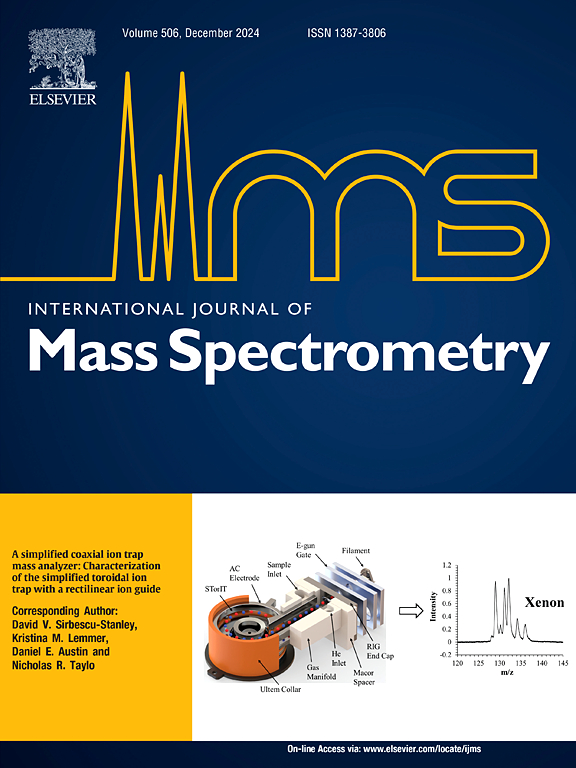Rectification of kinematic parameters of dissociative ionization derived from ion momentum spectra
IF 1.7
3区 化学
Q3 PHYSICS, ATOMIC, MOLECULAR & CHEMICAL
引用次数: 0
Abstract
Ion momentum spectrometers, which are commonly used devices for studying molecular dissociation, are lossy devices in that not all charged fragments are assuredly detected. Combined with the fact that neutrals are always undetected, this can result in a mixing of distinct dissociation channels. A dissociation event with all charged fragments may mimic an event where at least one fragment is neutral. As a result, an analysis of the dissociation channels identified using an ion pair coincidence map may result in misleading interpretations, especially when analyzing channels with both charged and neutral fragments. In this study, we present a method to rectify the distributions of kinematic parameters for such cases. The rectification method is discussed in the context of the (O, C, O) breakup channel of the CO molecular ion. The distribution of the kinematic parameters after rectification exhibit stark differences from the raw distributions, emphasizing the need for rectification. A comparison of the rectified data with cases in the literature where such losses are estimated to be negligible, underline the efficacy of the method.

由离子动量谱推导解离电离运动参数的修正
离子动量谱仪是研究分子解离的常用仪器,它是一种有损仪器,不能准确地检测到所有带电碎片。再加上中性物质总是无法被检测到,这可能导致不同解离通道的混合。具有所有带电片段的解离事件可以模拟至少一个片段为中性的事件。因此,使用离子对重合图对解离通道进行分析可能会导致误导性的解释,特别是在分析带有带电和中性碎片的通道时。在这项研究中,我们提出了一种方法来纠正这种情况下的运动学参数分布。以CO22+分子离子的(O+, C+, O)分解通道为背景,讨论了整流方法。修正后的运动参数分布与原始分布有明显差异,强调了修正的必要性。经过校正的数据与文献中估计这种损失可以忽略不计的案例进行比较,强调了该方法的有效性。
本文章由计算机程序翻译,如有差异,请以英文原文为准。
求助全文
约1分钟内获得全文
求助全文
来源期刊
CiteScore
3.60
自引率
5.60%
发文量
145
审稿时长
71 days
期刊介绍:
The journal invites papers that advance the field of mass spectrometry by exploring fundamental aspects of ion processes using both the experimental and theoretical approaches, developing new instrumentation and experimental strategies for chemical analysis using mass spectrometry, developing new computational strategies for data interpretation and integration, reporting new applications of mass spectrometry and hyphenated techniques in biology, chemistry, geology, and physics.
Papers, in which standard mass spectrometry techniques are used for analysis will not be considered.
IJMS publishes full-length articles, short communications, reviews, and feature articles including young scientist features.

 求助内容:
求助内容: 应助结果提醒方式:
应助结果提醒方式:


